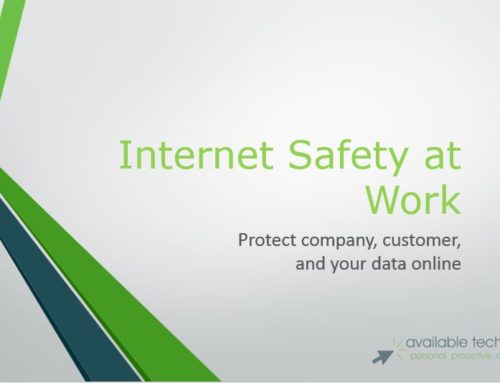Keep the old or bring in the new? How to maximize productivity through software.
Sometimes I wonder what it would be like to be a caveman.
No cellphone, no internet, no ipad. No Twitter. No YouTube. No XBOX. Just Mastodon hunts and sharpening your favorite spear.
These days we are totally immersed in technology. Especially if you do what I do everyday, you have to constantly read, study and attend events just to keep up with the ever-lengthening learning curve.
The amazing thing about technology, is that if you are aware at how dependent you are on it, you can step back, remove yourself from the equation, and take a look at what things might be like if computers weren’t around.
What would it have been like to be at ground zero when the wheel was invented? Think of how many ways the concept of such a simple invention as the wheel has been applied. From wheelbarrow to batmobile, Lothar would be proud.
Here’s the point . . .
Software is the Wheel. We have shiny high frequency Apples and PC’s with massive amounts of memory and bandwidth, capable of churning out amazing numbers of gigaflops (yes, that’s a real word.) Chromebooks, tablets, smartphones, gaming rigs, animation systems . . . without “the wheel” they just don’t function. Without software, Microsoft’s old slogan of “Where Do You Want to Go Today?” would be easy to answer. Nowhere.
How can you make the best use of the wheels you have? When is it time to get new wheels to help your vehicle go faster and perform more efficiently? Here are a few things you can do to keep yourself and your employees from feeling like you’re in the stone age.
———————————————————————-
My software works OK. Why should I change?
Here are a few reasons.
– Employee Morale
I have been in plenty of offices where managers have told me, “We are really frustrated with our computers. The employees complain about how long it takes to do things, and sometimes they just have to walk away for a minute to keep from exploding. And I can’t blame them.”
Some offices lose good people because they just aren’t satisfying places to work. People have alot to do with it, but so does the quality and effectiveness of the tools employees are given to do their jobs. Old or outdated software and hardware cause turnover. I’ve seen it too many times to doubt it.
The manager above worked at an office with over 60% turnover of office staff on a yearly basis. They had mismatched operating systems and office applications, and software they used that was specific to their industry hadn’t been upgraded in 5 years. The unintuitive interfaces and inconsistent user experience of this old software contributed to the employees frustration level and seriously affected morale. After putting upgrades in place and maintaining a level of consistency in the IT structure of the organization, they were able to retain 95% of their valuable employees in the last year.
– Increased Productivity
New software often includes design improvements to help you spend less time clicking and more time producing. For example, starting in Microsoft Office 2007, the concept of the “fluent user interface” was introduced. It was designed to free users from having to thrash their way through a convoluted menu structure in an attempt to locate the commands, tools, options, and features needed to accomplish a particular task. This increase in efficiency translates to less time spent per task and more work performed in a given work day. Time = Money.
Newer software is optimized for newer hardware and is more streamlined and less “clunky.” Provided that it isn’t underpowered, up to date software is just plain faster.
– Compatibility Issues
This is a good one. Have you ever received a Microsoft Word document or Adobe Acrobat file in an email and found that you couldn’t open it? Sure you have. Many times this is because other organizations and individuals that you do business with are upgrading and are creating files in newer software than you currently have. Although newer software will usually open files made in a previous version, the reverse is almost never true. Try opening a file from a version newer than yours and you will probably be disappointed.
I like real world examples, so here’s another one. A client prepared an important presentation in Powerpoint 2007 and took it to be reproduced on slides. When the presentation was opened by the designer, the elements were not lined up correctly. The designer was using one of the much newer versions and the formatting of the presentation did not translate exactly the same in the different versions. This resulted in the client working until 2 AM reformatting the presentation so it could be reproduced and put on a plane that morning. These are the kind of incidents that can be easily avoided by keeping up with the newest stable software versions on your workstations or your computer at home.
– Better Security
This is becoming a big deal. In years past, we didn’t worry too much about upgrading to every little new point release, since the functionality didn’t change dramatically. So it was ok to skip a version or two. Not anymore! Now, updates are much more about plugging security holes and vulnerabilities than they are about fixing bugs or adding features. Every update you don’t do is an open door to a data breach.
———————————————————————–
Why SHOULDN’T I Upgrade my Software?
There are some legitimate reasons to stick with what you are using now.
Your company might use “legacy” (this means old) software that they just don’t make anymore. you need it to run your business or perform some specific task, but the software won’t run in conjunction with a newer operating system or other upgrade.
Your hardware might be too old and doesn’t meet the minimum requirements of the new version of Office or Windows. In almost all circumstances, it makes sense to invest in upgrading the hardware and the software at the same time, but sometimes that kind of expenditure just isn’t in the budget.
The next new version might be coming out soon. The rule to follow is that when new software is released, you should wait 6 months for the bugs to be shaken out. The early adopters always end up being the guinea pigs for the newest releases, and always pay the price when new bugs are discovered. If the new version or product will be released within the next 3 months, it may be worth it to wait until that version is tried and proven to be reliable. If it will be a year or more before the software release, go ahead and upgrade to the newest stable version that has been out for a while.
———————————————————————–
Whether you decide to upgrade or not, follow these tips to maximize your efficiency or the efficiency of your employees.
– Get Trained
Know how to use what you’ve got. Invest in a training session with one of our technicians or get training materials for your employees to review. There are many great books out there to help you use your software like it was meant to be used. Ask us. We can recommend some for you.
Click HERE for some great online resources to get trained on Microsoft Office for free.
Training teaches employees the nuts and bolts of the application, as well as increases the confidence level with the software. These things, along with shortcuts learned in training, combine to drastically improve the amount of work employees are able to do while in that program.
– Organize a “Training Day” or a round table discussion of users that frequently use the product. Ask employees to write down 3 things about the company’s software or computers that they feel are inefficient or annoying. Chances are all of the participants will name basically the same issues, helping you identify problem areas.
– Use What you Already Have
Many users don’t realize that they use about 15% of the functionality of their productivity software. Microsoft Word does a whole lot more than allow your computer to act as a glorified typewriter. It can create webpages or merge data with documents. Microsoft Excel is the single most time-saving application out there, but you have to know what its capabilities are.
If you have a server, you probably already have an intranet, or internal website accessible to all your employees, customers and contractors. With a little time and thought, you can be using this resource to share data and calendars as well as host discussion groups and make important files and folders available over the internet.
– Don’t Overlook Free or Internet-Based Applications that can Boost Productivity
Here is a list of good ones to check out:
Microsoft Office 365 – cloud versions of the well known MS Office Suite of Productivity applications
Google G-Suite – Gmail, google calendar, Docs and Google Drive are now combined into Google G-Suite. MS Office and enterprise email functionality over the internet. The first real-world example of free “Cloud Computing”
Skype – Phone and video calls over the internet for free? Yep.
Open Office – Free open source Office compatible application suite. Open source means “no support” but agreat program to check out.
Evernote or OneNote – One place to put all your notes and keep them synchronized across all your devices
Sugar CRM or SalesForce CRM – Web based, ACT-like sales management and customer support tracking.
Log Me In and Teamviewer – Access your desktop over the internet from another location. Secure and free.
Slack – The next level of instant messaging, apps like Slack combine instant messaging, chat, file sharing and collaboration tools in a cloud based interface.
– Call Available Technology !
Consulting with businesses on technology and how to use it is what we do.
———————————————————————
The invention of the wheel allowed prehistoric folks to transport their furs or meat or rocks in one trip rather than 3 or more. Since then we have been trying everything we can think of to do more in less time.
What the advancement of technology has actually done is made it possible for one person to do the work of 3. Not only is it possible, but we now expect that kind of productivity from ourselves and our employees. I’m not sure, but if the genius that stumbled out of his cave and thought up the first “wheel prototype” could have looked forward in time and seen the traffic on Woodruff Road, he may have thought better of it, laid down under a palm and taken a nap instead.
Need help from a pro? Contact Available Technology at https://available-tech.net or 864-232-1234 to ask us about an IT assessment of your small business or just to talk business with me.
Mike Lane, Available Technology Inc
http://dmichaellane.com
Let me know what you think! Leave comments or contact us @availabletech







